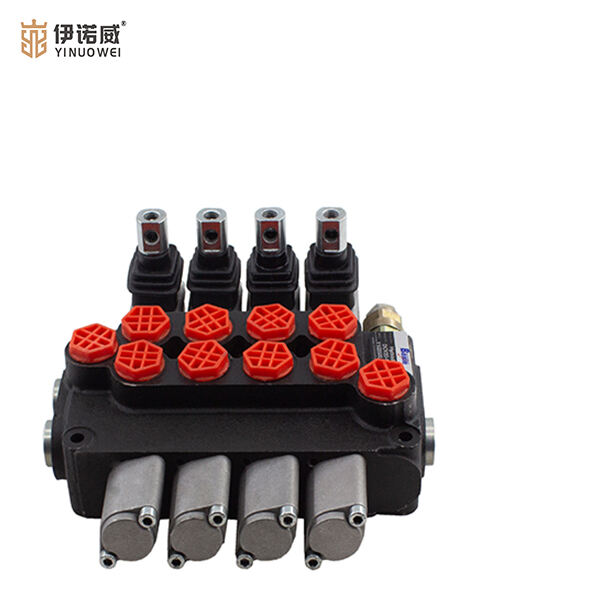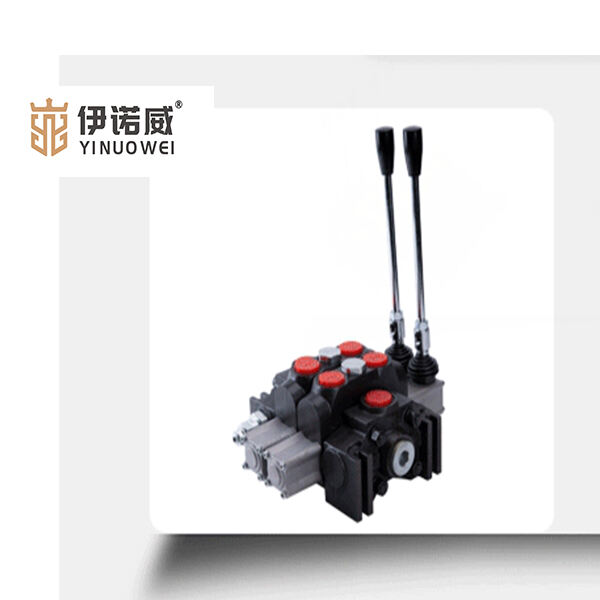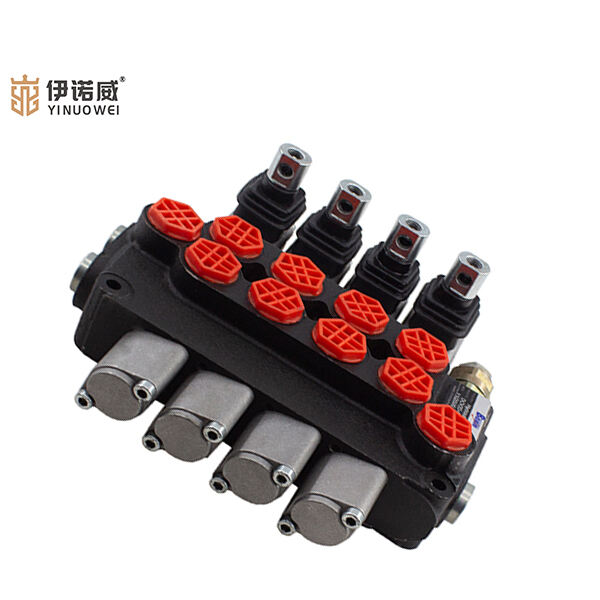ဒိုင်ရကေးရှင်း ကန့်သတ်လှုပ်ရှားခြင်း တွင် ဟိုင်ဒရီဗောလ်စနစ်၏ အဓိက အစိတ်အပိုင်းတစ်ခုဖြစ်သည်။ JinJia ဒိုင်ရကေးရှင်း ကန့်သတ်လှုပ်ရှားခြင်း များသည် ကျယ်ဝန်းစွာ အသုံးပြုထားသည်။ ဟိုင်ဒရီဗောလ်စနစ်များဖြင့် လူကြီးမင်းဆိုင်ရာ အရာများကို ပြောင်းရွှေ့ရန် အားကို ပေးသည်၊ ဥပမာ- အိုတော်များ၊ ထရက်များ၊ လူကြီးမင်းဆိုင်ရာ စက်မှုများ စသည်များ။ ဒီမျိုးသော အရာများကို ဟိုင်ဒရီဗောလ်စနစ်များမရှိဘဲ ပြောင်းရွှေ့ရမယ်ဆိုရင် အလုပ်အသားကို အများကြီးလုပ်ရပါမည်။ ဒါပေမယ့် ဟိုင်ဒရီဗောလ်စနစ်များက လက်ရှိဘဝတွင် အထောက်အကူအဖြစ် အသုံးဝင်သည်၊ အထူးသဖြင့် လူကြီးမင်းဆိုင်ရာ အလုပ်များတွင် အသုံးပြုသည်။
ဒိုင်ရကေးရှင်း ကန့်သတ်လှုပ်ရှားခြင်းများသည် ဟိုင်ဒရီဗောလ်စနစ်တွင် ရောင်းကွက်၏ လှုပ်ရှားမှုကို ကိုင်တွယ်သည့်အတွက် အရေးကြီးသည်။ လူတစ်ယောက်သည် အိပ်ဖွင့်ထားသော ပြာပို့တာတစ်ခုကို လက်ထဲမှာ ကိုင်ထားသည့် လှေကားကို စဉ်းစားပါ။ ဒါက ရေကို အမှန်တကယ် မှန်းနိုင်ပါဘူး။ ဒါပေမယ့် ဒီလိုပဲ ကန့်သတ်မရှိဘဲ လုပ်ဆောင်ပါတယ်။ omm 32 hydraulic motor အဲဒီ ပတ်ဝန်းကျင်မှာ ဒီ လုံးများမရှိခဲ့ရင် အခြေအနေတစ်ခုကို သာမက ထိုးဖို့ ရောက်မယ်ဆိုတာပါ။ ဒါဟာ လုပ်ငန်းစဉ်အားလုံးကို မှန်ကန်စွာ လုပ်ဆောင်ဖို့ မရှိပါဘူး။ အလေးချိန်များလောက်တဲ့ အရာတွေကို ရွေ့ယူဖို့ အလွယ်တကူဖြစ်စေတဲ့ အကြောင်းက ဒီ ဟွေ့ဒရောလိတ်စနစ်ရဲ့ ဒီဇိုင်းတွေကို ဖွင့်မှု သို့မဟုတ် ပိတ်ဖို့ အားလုံးကို လုပ်လိုက်တာပါ။ ဒီ လုံးတွေက ဖွင့်လို့ရပါတယ် သို့မဟုတ် ပိတ်လို့ရပါတယ်။ ဒီအချိန်ကို ထိန်းသိမ်းဖို့ အရေးကြီးပါတယ်၊ အေးချမ်းမှုနဲ့ ကုမ္ပဏီရဲ့ အကျိုးသက်ရောက်မှုအတွက်လည်း အရေးကြီးပါတယ်။
အမှတ်သို့ ကိုင်တွယ်ချက်လုပ်ငန်းစဉ်များတွင် Directional Control valves သည် များစွာသုံးစွဲထားပါသည်။ ဥပမာအားဖြင့်၊ ဆောင်းရောင်းတွင် အီးလ်ဘိုင်းစနစ်များသည် အိုးများ၊ လေးထောင်များနှင့် အုပ်ချုပ်မှုကို ရွေ့လွှားရန်အတွက် အရေးကြီးဖြစ်ပါသည်။ ထို့ပြင် ဒေသများသို့ အပြင်ဆင်ရန်အတွက်လည်း ကရိုင်းကဲ့သို့ အလေးတိုးကို တင်ဆောင်ရန်အတွက်လည်း အသုံးပြုသည်။ လူသားတို့သည် ထိပ်တန်းစီးပွားမှုကို တိုးတက်ရန်အတွက် ထိပ်တန်းစီးပွားမှုကို အသုံးပြုသည်။ ထို့ပြင် လူသားတို့သည် ထိပ်တန်းစီးပွားမှုကို အသုံးပြုသည်။ ထို့ပြင် ထိပ်တန်းစီးပွားမှုကို အသုံးပြုသည်။ ထို့ပြင် ထိပ်တန်းစီးပွားမှုကို အသုံးပြုသည်။ ထို့ပြင် ထိပ်တန်းစီးပွားမှုကို အသုံးပြုသည်။ ထို့ပြင် ထိပ်တန်းစီးပွားမှုကို အသုံးပြုသည်။ ထို့ပြင် ထိပ်တန်းစီးပွားမှုကို အသုံးပြုသည်။ ထို့ပြင် ထိပ်တန်းစီးပွားမှုကို အသုံးပြုသည်။ ထို့ပြင် ထိပ်တန်းစီးပွားမှုကို အသုံးပြုသည်။ ထို့ပြင် ထိပ်တန်းစီးပွားမှုကို အသုံးပြုသည်။ ထို့ပြင် ထိပ်တန်းစီးပွားမှုကို အသုံးပြုသည်။ ထို့ပြင် ထိပ်တန်းစီးပွားမှုကို အသုံးပြုသည်။ ထို့ပြင် ထိပ်တန်းစီးပွားမှုကို အသုံးပြုသည်။

အမှတ်သို့ ကိုင်တွယ်ထားသော လှိုင်းချိတ်ဆက်ပေးသော ဝါလဗျများကို အသုံးပြုခြင်းသည် ဒီစာရင်းအတွင်း အများကြီးသော အမြဲတမ်းသော အမြန်များကို ပေးပါသည်။ ပထမအားဖြင့်၊ သူတို့သည် လုပ်ငန်းစဉ်အတွင်းရှိ လှိုင်းအမြန်ကို ကိုင်တွယ်ထားသည်။ အခြားအချက်တစ်ခုမှာ သင့်ရဲ့ ကိရိယာ (သို့) လုပ်ငန်းစဉ်ရဲ့ အမြန်ကို အကြီးမားသော အကျယ်ပြန့်မှုအတွင်း ပြောင်းလဲနိုင်သည်။ ဒါဟာ မျိုးမျိုးသော လုပ်ငန်းများအတွက် အရေးကြီးပါသည်။ ဥပမာအားဖြင့်၊ သင့်အားလုံးက အလွန်ကြီးမားစွာ ရှုပ်ထွေးမှုအတွက် အခြားအရာတစ်ခုကို လွတ်လပ်စွာ ရွေ့လျှော့ချချင်လျှင်၊ ထိုဝါလဗျကို အကူညီပေးနိုင်ပါသည်။ ဒုတိယအားဖြင့်၊ သင့်ကိုယ်တိုင် လုပ်ငန်းစဉ်၏ မျိုးမျိုးသော အပိုင်းများကို ဖွင့်ပြီး သတ်မှတ်နိုင်သည်။ ထို့ကြောင့် လုပ်ငန်းစဉ်အတွင်းရှိ ကိရိယာများကို အချိန်တစ်ခုတွင် လုပ်ဆောင်နိုင်သည့် အပိုင်းများကို ရွေးချယ်နိုင်ပြီး လုပ်ငန်းစဉ်အား ကိုင်တွယ်ပြီး အင်္ဂါသတ်မှတ်မှုကို တိုးတက်စေပါသည်။ နောက်ဆုံးအားဖြင့်၊ ဒီဝါလဗျများသည် အမြဲတမ်းသော အချိန်အတွင်း လုပ်ဆောင်နိုင်ပြီး ချိုးဖောက်မှုမရှိဘဲ လုပ်ဆောင်နိုင်သည်။ ထို့ကြောင့် အခြားအချိန်များကြားတွင် ကျော်ကြားသော ကျောက်ဆုံးမှုများကို ရှာဖွေနိုင်သည့် လုပ်ငန်းများတွင် အရေးကြီးပါသည်။

ဒေရိုင်းချိတ်ထားသော ကန့်သတ်လှုပ်ရှားမှု တိုက်အားဖြင့် သင့် hydraulic system ရဲ့ အသုံးပြုမှုအတွက် directional control valves တွေဟာ အလိုအလျောက် ဆိုင်းရိုးမရှိပါက၊ 01,776:00:00 တိုင်းတာမှုများစွာရှိပါတယ်။ ပထမဆုံးမေးခွန်းက သင့်စနစ်ရဲ့ အရွယ်အစားပါ။ သင့် framework အတွက် အလိုအလျောက် valve တစ်ခုရွေးချယ်ရန်လိုအပ်ပါတယ်။ valve သည် အလွန်ငယ်သော်လည်း ကြီးလျှင် ပัญหาတွေဖြစ်နိုင်ပါတယ်။ နောက်တစ်ခုက သင့်အတွက် အသုံးပြုသော fluid ဘာလဲဆိုတာပါ။ ဒီ valves အချို့က အထူးပြောင်းလဲမှုတွေနဲ့ လုပ်ဆောင်ဖို့ ဒီဇိုင်းထားတဲ့တိုင်းတွေရှိပါတယ်၊ ဥပမာ oil သို့မဟုတ် water။ ဒါကြောင့် သင့်စနစ်ထဲမှာရှိတဲ့ fluid အတွက် အလိုအလျောက်တစ်ခုရွေးချယ်ပါ။ တတိယအရာက သင့်အတွက် ဘယ်လောက်ကို ကန့်သတ်လှုပ်ရှားဖို့လိုအပ်လဲဆိုတာပါ။ valves အချို့က အလွန်ရှင်းလင်းပြီး အရွယ်အစားနှစ်ခုသာရှိပါတယ်။ အချို့ကတော့ အလွန်ရှုပ်ထွေးပြီး များစွာလုပ်ဆောင်နိုင်တဲ့ အချိန်များကို ပရိုဂရမ်လုပ်နိုင်ပါတယ်။ သင့်လိုအပ်ချက်တွေကို သိရှိလိုက်ရင် မှန်ကန်တဲ့ ရွေးချယ်ချက်ကို လေ့လာဖို့ အကူအညီပေးပါတယ်။

ဒေရိုင်းချက်ထားသော ကန့်သတ်လှုပ်ရှားမှု ဝါလဗားများသည် အမြဲတမ်း အလွယ်တကူ အလုပ်လုပ်ပြီးဖြစ်ပါသည်။ သို့သော်လည်း 脩 chữa လိုအပ်သည့် ပроблемများကို တွေ့ရှိနိုင်ပါသည်။ အများအားဖြင့် ပြဿနာတစ်ခုမှာ ဝါလဗားသည် တစ်နေရာတွင် ကြွက်နေပြီး ရွေ့လျှင်မရပါ။ ထိုသည် မြောင်း၊ မီးမောင်း သို့မဟုတ် အခြားအရာများသည် ဝါလဗားထဲသို့ ဝင်ရောက်သွားသည် သို့မဟုတ် ဝါလဗားသည် အခြားသို့ ဆောင်းထားသော အခါတွင် ဖြစ်နိုင်ပါသည်။ ထိုသည် ဖြစ်လာသောအခါ ဟိုင်းဒရောလိုက် စနစ်အတွင်း အလုပ်လုပ်ခြင်းကို မှန်ကန်စွာ ရပ်တန့်နိုင်ပါသည်။ ပိုမို အများအားဖြင့် ပြဿနာတစ်ခုမှာ ဝါလဗားသည် ရောင်းဝယ်ထုတ်ကုန်ကို လျှော့ချစေခြင်းဖြစ်ပါသည်။ ထိုသည်လည်း ဝါလဗားသည် ဆောင်းထားသောအခါ သို့မဟုတ် ရောင်းဝယ်ထုတ်ကို ကိုင်တွယ်ထားသော စီးမှုပျံသည် ပြဿနာဖြစ်လာသောအခါ ဖြစ်နိုင်ပါသည်။ မိမိသည် လျှော့ချမှုကို တွေ့ရှိလျှင် ဆောင်းထားမှုသည် ပိုမိုဆိုးရွားလာမှာမဟုတ်ဘဲ ဖျက်သိမ်းရန် အလိုလျောက် ဖြစ်ပါသည်။